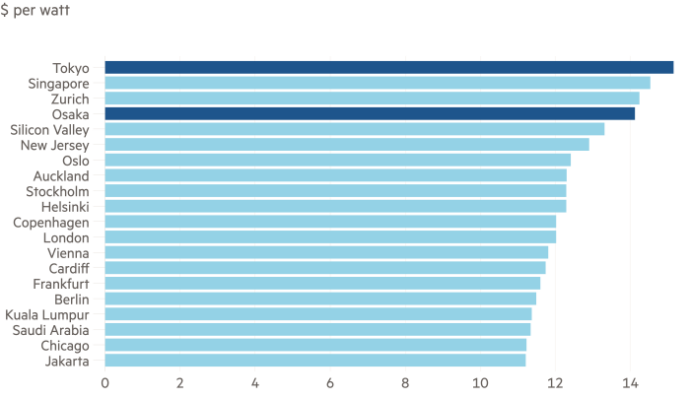Unlock the Editor’s Digest for free
Roula Khalaf, Editor of the FT, selects her favourite stories in this weekly newsletter.
For much of the past decade, Japanese government bond yields were rooted near zero. Negligible inflation and ultra-loose monetary policy — which included vast asset purchases by the central bank — confounded any bets that yields would rise.
But the return of inflation, which allowed the central bank last year to call time on eight years of negative interest rates, has flipped the market on its head.
The Japanese government bond market — still dominated by the Bank of Japan, which owns half of it — has suffered a brutal sell-off that has pushed the benchmark 10-year yield in recent months above 1.5 per cent to its highest level since the 2008 financial crisis. Yields rise as bond prices fall.
The rout has made other bond market wobbles look small: a rise so far in 2025 of roughly 0.5 percentage points in those 10-year JGB yields has outstripped rises in UK gilt yields, while those of US Treasuries, the global benchmark, had fallen by late September.
“For most of my career, JGBs have been the boring corner of fixed income markets,” says Maya Bhandari, multi-asset chief investment officer in Emea at asset manager Neuberger Berman.
Now JGBs are leading this year’s stop-start sell-off in global bonds, because of what Bhandari calls a mix of “bloated debt”, at more than 200 per cent of economic output, the prospect of greater spending and questions over demand for long-term government debt from traditional buyers such as life insurers.
The sell-off has been particularly pronounced in very long-term debt, with 30-year JGB yields rising to a record high above 3.2 per cent last month.
“The steepening of the long end of the curve has been really dramatic,” says Roger Hallam, global head of rates at money manager Vanguard, referring to the higher yields on longer-term debt.
The most recent JGB wobble was triggered by political uncertainty: defeat for the ruling Liberal Democratic party in upper house elections in July set the ball rolling for the resignation of Prime Minister Shigeru Ishiba in September.
More from this report
The market was already uneasy about the BoJ’s tapering of bond purchases, and concerns were heightened by a string of weak auctions of government debt.
Authorities have already responded to the sharp rise in long-term borrowing rates. The BoJ said in June that it would move more slowly to taper its asset purchases, and the finance ministry is taking the unusual step of trimming its planned issuance of ultra long-term debt in the course of the financial year.
One key question now is how the BoJ’s expected moves to raise interest rates affect the bond market. Its decision in September to hold rates steady was split, with two rate-setters voting for an increase.
“Inflation is sticky in Japan and like elsewhere it is important for the BoJ to maintain credibility . . . acting to tighten policy when required,” says Derek Halpenny, European head of global markets research at banking group MUFG, suggesting that higher interest rates could help to “anchor” yields.
But pushing official rates higher also has the potential to take longer-term market interest rates with them.
The sharp rise in Japanese government bond yields is being closely watched in other markets, with analysts warning that higher rates in Japan might encourage domestic investors to sell overseas investments and park their money in JGBs instead.
This is a risk to other markets where Japanese investors have been important buyers, including within US Treasuries and the Eurozone sovereign debt market.
“For [the] first time since 2020, Japanese investors will soon have yields high enough to stay at home,” said analysts at investment bank RBC Capital Markets in a recent report, warning of a “moment of pivotal change”.
Unsuccessful bets on the direction of JGBs in the past were often dubbed a “widow-maker trade”, after investors failed to predict that Japan’s sovereign bond yields would continue to sink and policymakers would struggle to ignite inflation and growth.
Now the big call is if and when the Japanese government bond market sell-off will cool. Some managers are trading shorter-term moves in a volatile market. Pimco, the bond giant, took such an opportunity earlier this year, betting that the sell-off in long-dated debt had gone too far.
July’s trade deal between Tokyo and Washington has removed some uncertainty, easing concerns that a trade conflict with the US could hit growth and spark further volatility.
“This situation is not comfortable,” says Hiroaki Sugiyama, a JGB investor at Asset Management One, a Japanese investment manager. “But I think it’s better than before.”


